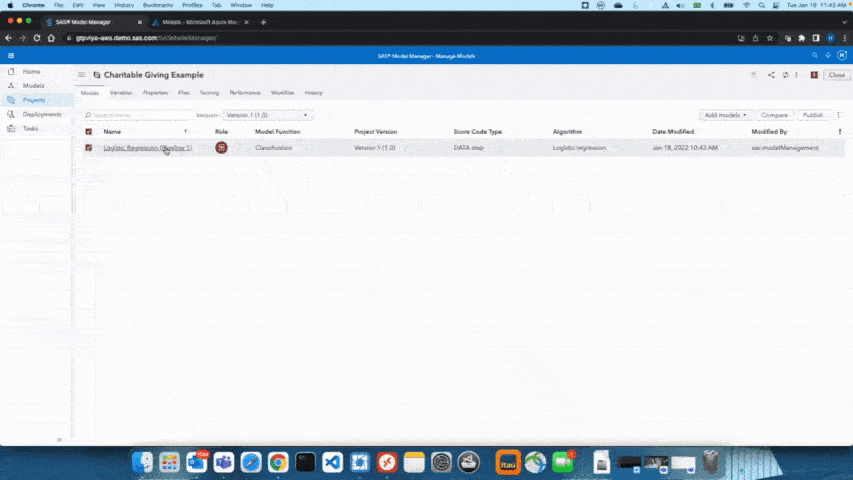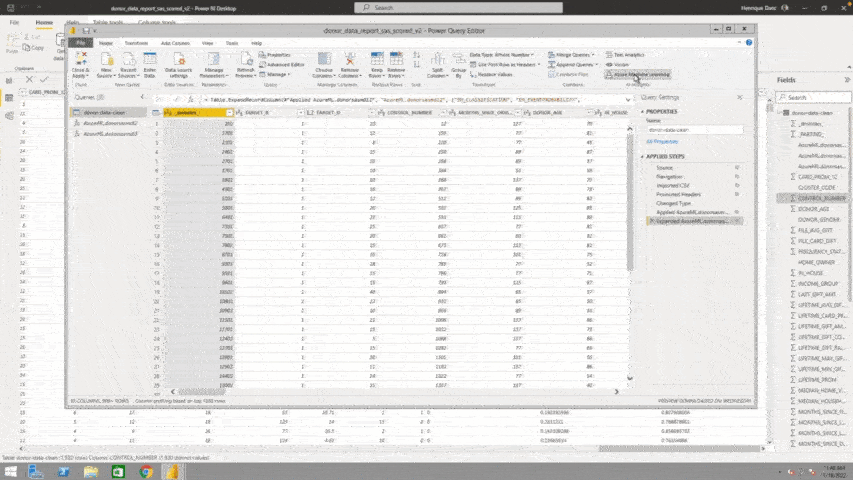

ModelOps in practice: How to call SAS models from Microsoft Power BI, part 4
source link: https://blogs.sas.com/content/sgf/2022/05/16/how-to-call-sas-models-from-microsoft-power-bi/
Go to the source link to view the article. You can view the picture content, updated content and better typesetting reading experience. If the link is broken, please click the button below to view the snapshot at that time.

ModelOps in practice: How to call SAS models from Microsoft Power BI, part 4
0Just getting started with this series? Make sure to explore the earlier posts Part 1, Part 2 and Part 3.
Up until now, you have seen how ModelOps can solve your biggest machine learning challenges and that SAS and Microsoft, together, can help you deploy, govern and monitor your models anywhere in the Microsoft Cloud. But what does that look like in practice and what value does that provide you?
In this blog, we will share how to register SAS and open-source models from SAS Model Manager to Azure Machine Learning and then call that model directly from Power BI.
SAS Model Manager is a centralized, searchable repository for all types of models and analytical assets. This solution gives you complete visibility into your analytical processes, ensuring traceability and governance. SAS Viya on Azure allows you to efficiently move your analytical models from the innovation lab into production. With SAS and Microsoft, you can now easily and seamlessly deploy models in Azure Machine Learning (AML).
Step 1: SAS Model Manager governs, deploys, and monitors all types of SAS and open-source models (i.e., Python, R). Deploy your model registered in SAS Model Manager to Azure Machine Learning.
Once a model is deployed into Azure Machine Learning it can be leveraged just like any other model in Azure Machine Learning while maintaining the governance and control that Viya offers.
Step 2: Refresh Azure Machine Learning to find your model with associated artifacts and variable metrics that can be used to publish the model in an executable container runtime supporting SAS and open-source models.
After you publish a model to an Azure Machine Learning publishing destination you can deploy the published model to AKS. This enables you to make the published model available so that you score it using custom code or another application outside the SAS Viya environment. It also enables you to deploy the published model in a production environment.
Step 3: Go back to SAS Model Manager to deploy the model to AKS (Azure Kubernetes Services) which is the Azure Machine Learning compute target. This steps ensures that the model you have published is ready to be deployed.
Step 4: Score your model in Azure Machine Learning.
Step 5: Score your model from Power BI.
When a new model is developed and ready for production, it is easy to register that model in Azure Machine Learning and replace the existing model that is in production. This allows business intelligence users to quickly gain access to the most accurate insights. By leveraging the strengths of the ModelOps lifecycle that SAS has developed the deployment mechanism and distribution of that model using the Microsoft Cloud, models can be pushed out into production in an automated and repeatable way. The combination of SAS Viya and Azure Machine Learning accelerates the time to value for customers who are looking to incorporate DevOps principles into their model development and deployment.
To learn more about ModelOps and our partnership with Microsoft, see our whitepaper: ModelOps with SAS Viya on Azure.
About Author

Product Manager, SAS Cloud Programs
Within the Cloud Programs organization at SAS, I manage product vision and direction for technology integration with Microsoft. As part of the team focused on cloud strategy, I am an expert in modern software architecture and the scalability of analytics in the cloud. I have extensive experience communicating technical topics and best practices for early adopters of emerging technologies across a broad spectrum of industries and product segments.
Leave A Reply Cancel Reply
Save my name, email, and website in this browser for the next time I comment.
This site uses Akismet to reduce spam. Learn how your comment data is processed.
</div
Recommend
About Joyk
Aggregate valuable and interesting links.
Joyk means Joy of geeK




